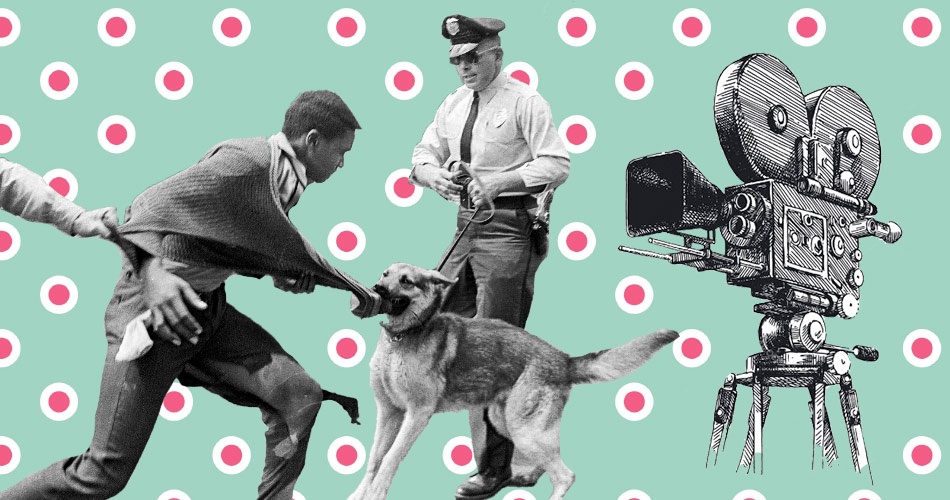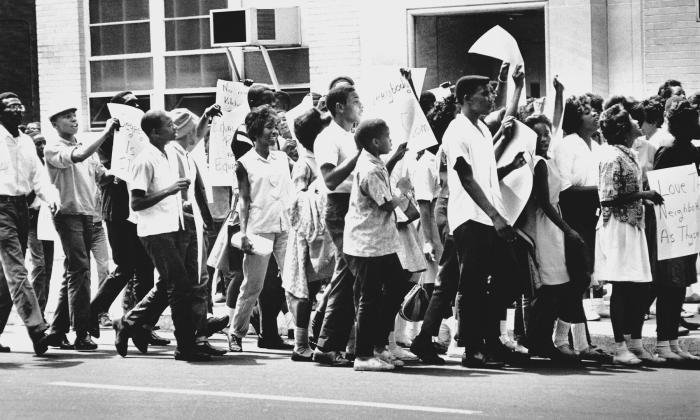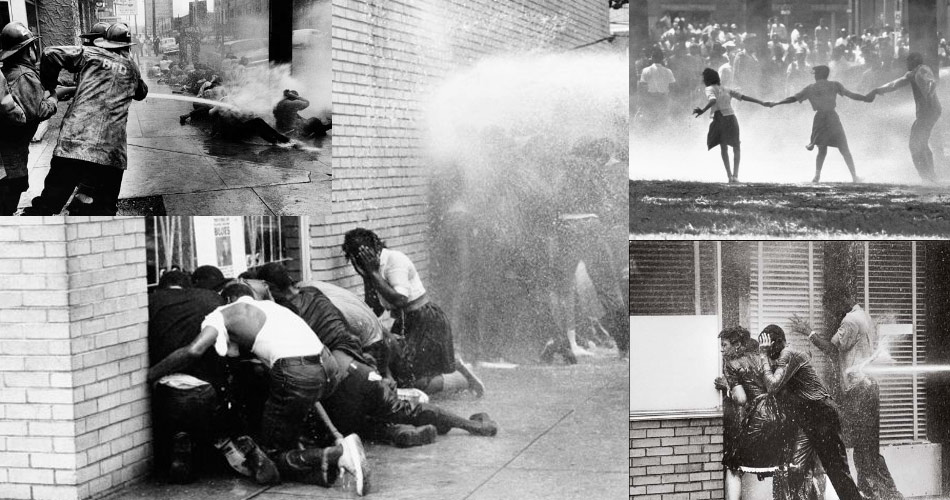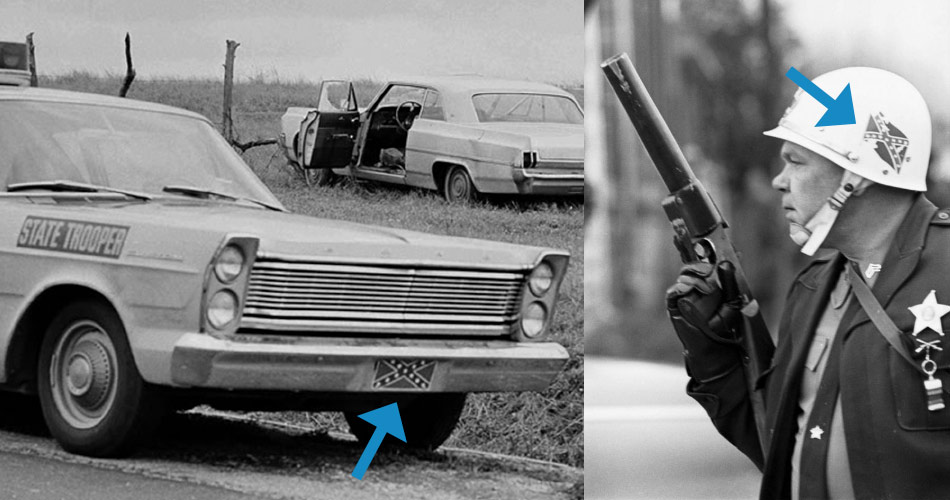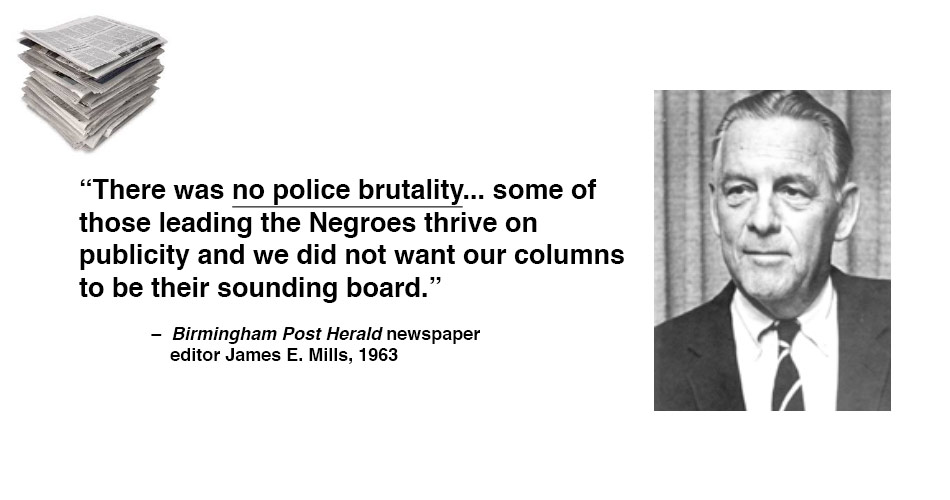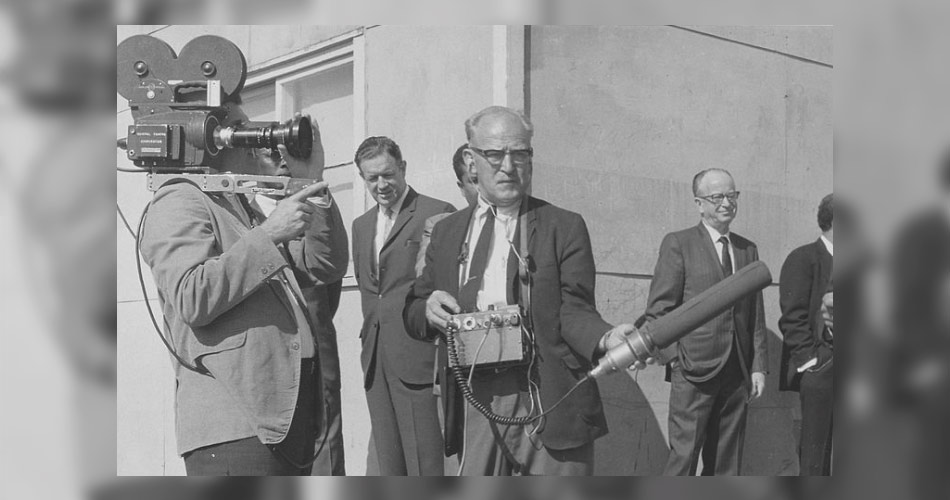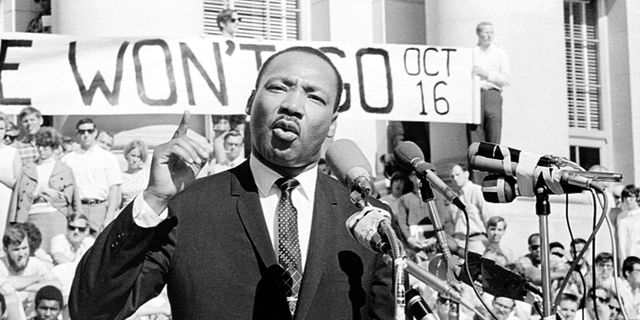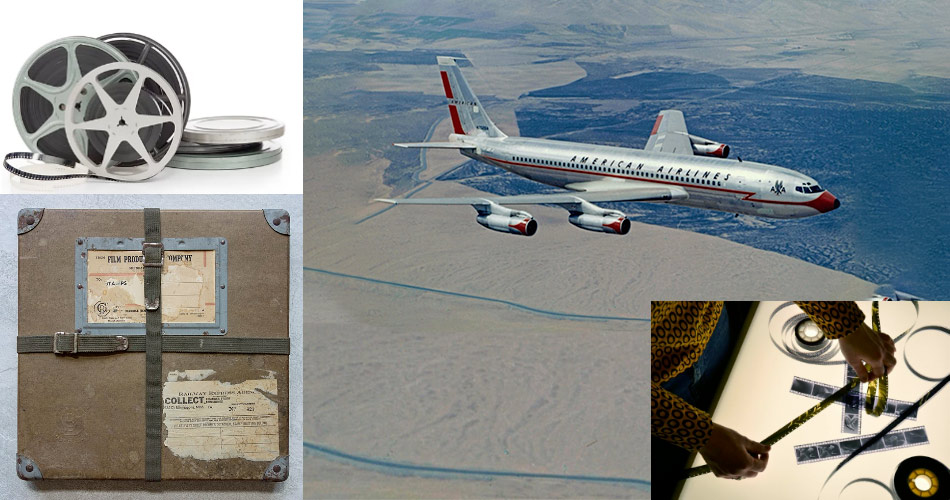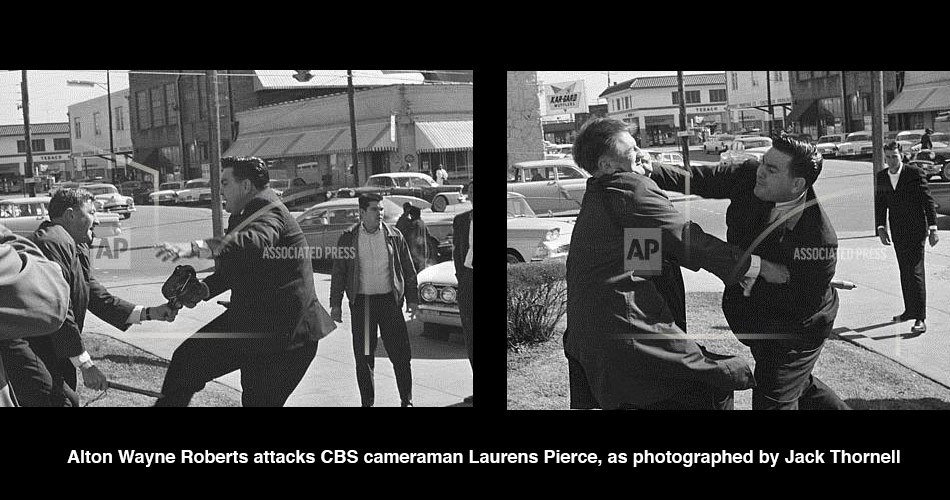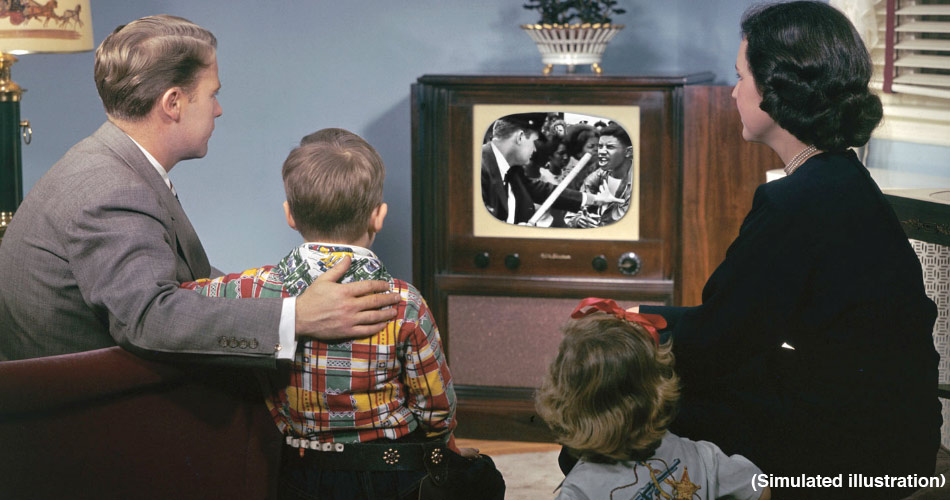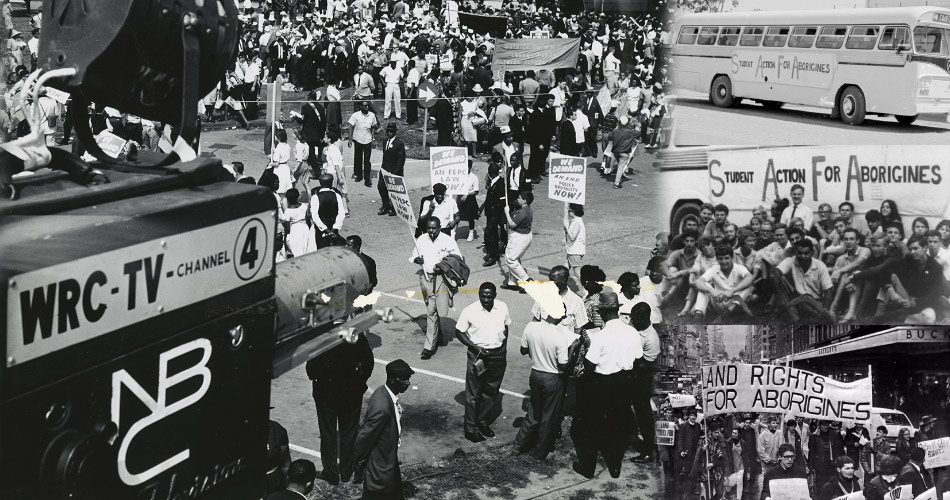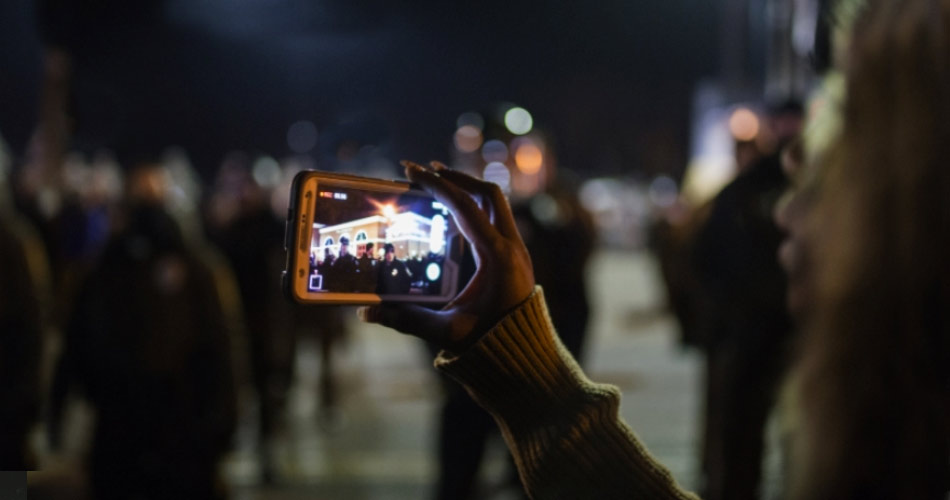Images of American police brutality shocked the world. I'm not talking about footage from 2020.
I'm talking about Birmingham, Alabama. In 1963.
This is the real story of what it took to show Americans the truth of what was happening. Because it wasn't easy. Thread (1/15):
I'm talking about Birmingham, Alabama. In 1963.
This is the real story of what it took to show Americans the truth of what was happening. Because it wasn't easy. Thread (1/15):
In 1963 Dr King led civil rights marches in Birmingham, Alabama. The campaign was designed to show the brutality of segregation.
Many of the marchers were children. They wore their best church clothes. They were brutalized by police who beat them with wooden clubs and dogs.
Many of the marchers were children. They wore their best church clothes. They were brutalized by police who beat them with wooden clubs and dogs.
The Birmingham Fire Department blasted child civil rights marchers with powerful hoses that caused deep welts on the skin, similar to a whip.
How strong were the hoses? The water pressure was reportedly at a level that would "peel bark off a tree or separate bricks from mortar."
How strong were the hoses? The water pressure was reportedly at a level that would "peel bark off a tree or separate bricks from mortar."
It is not exaggerating to say that Southern police in the 1960s were tools of state oppression.
It was common for these all-white police forces to wear Confederate flags on their helmets. Sometimes they even displayed the flag on their police cars.
It was common for these all-white police forces to wear Confederate flags on their helmets. Sometimes they even displayed the flag on their police cars.
By the way, a variety of police departments across the US have used the Confederate flag in their logos and insignias even in modern times.
Recently a South Dakota police dept grumbled about public pressure to remove the flag after George Floyd was murdered by their colleagues.
Recently a South Dakota police dept grumbled about public pressure to remove the flag after George Floyd was murdered by their colleagues.
In the early 1960s there was no such thing as a national newspaper.
Montgomery County, Alabama had a population of 170,000–– but only 35 New York Times subscribers. The local Southern press was often hopelessly racist. You couldn't count on them to tell the truth.
Montgomery County, Alabama had a population of 170,000–– but only 35 New York Times subscribers. The local Southern press was often hopelessly racist. You couldn't count on them to tell the truth.
TV networks ABC, CBS, & NBC were the closest thing to national media that existed during the Civil Rights Movement.
Based in New York, they weren't afraid of southern cops. They wanted powerful images. But that didn't mean it was a simple matter to broadcast police brutality.
Based in New York, they weren't afraid of southern cops. They wanted powerful images. But that didn't mean it was a simple matter to broadcast police brutality.
To document Civil Rights movement protests in the 1960s, camera crews had to lug heavy film cameras that weighed almost 40 pounds.
The Auricon Pro-600 could film up to 15 minutes at a time before the film reel had to be swapped for a fresh one. Imagine trying to run with this...
The Auricon Pro-600 could film up to 15 minutes at a time before the film reel had to be swapped for a fresh one. Imagine trying to run with this...
During the Civil Rights Movement, NBC, CBS, and ABC camera operators captured some of the most wrenching images of the 20th Century. Children getting attacked by racist police.
Footage shot in Birmingham Alabama in 1963 was essentially the original police brutality tape.
Footage shot in Birmingham Alabama in 1963 was essentially the original police brutality tape.
To show the entire country the shocking images they had captured in Birmingham, reporters had to rush the film to the airport.
"We deliberately had demonstrations before 12 o'clock. In order to get the film to New York, they had to leave about 1PM." - SCLC organizer Andrew Young
"We deliberately had demonstrations before 12 o'clock. In order to get the film to New York, they had to leave about 1PM." - SCLC organizer Andrew Young
Once footage of police brutalizing peaceful protestors was flown in to New York the same day, the film would be rushed to labs where they would develop it.
With no time left to spare before the nightly evening news, the networks would sometimes broadcast unedited footage.
With no time left to spare before the nightly evening news, the networks would sometimes broadcast unedited footage.
In the mid-1960s, racists eventually realized that media coverage of the civil rights movement was turning public opinion against them.
In one famous incident, a Klansman beat up a CBS News cameraman during his trial for murdering civil rights activists. (He was found guilty.)
In one famous incident, a Klansman beat up a CBS News cameraman during his trial for murdering civil rights activists. (He was found guilty.)
Images of police beating up children in Birmingham built support for the Civil Rights Act of 1964. Whites in the suburbs couldn't ignore kids getting beaten up while they ate their TV dinners.
Movements for gay rights & people with disabilities were inspired by the struggle too.
Movements for gay rights & people with disabilities were inspired by the struggle too.
Images from America's civil rights movement were rebroadcast all over the world.
In South Africa, the images inspired Nelson Mandela. In Australia they sparked a Civil Rights movement for Aboriginal Australians. They emulated American nonviolent tactics like freedom bus rides.
In South Africa, the images inspired Nelson Mandela. In Australia they sparked a Civil Rights movement for Aboriginal Australians. They emulated American nonviolent tactics like freedom bus rides.
To show the world footage of police brutality during the Civil Rights movement, teams of journalists & technicians had fly back and forth from the deep South to NYC, often working around the clock.
Today all you need to change the world is the cell phone camera in your pocket.
Today all you need to change the world is the cell phone camera in your pocket.
If you're interested how TV shaped the Civil Rights struggle I recommend this book by @A_Bodroghkozy, a @UVA prof who was kind enough to personally answer some early television technology questions I had for this thread.
The story is fascinating!
https://www.amazon.com/Equal-Time-Television-Movement-Communication/dp/0252079701/
The story is fascinating!
https://www.amazon.com/Equal-Time-Television-Movement-Communication/dp/0252079701/
I miss great stuff on Twitter all the time. There's just so much going on.
If you enjoy my history threads and don't want to miss one in the future, you can subscribe to my free substack. It's new and I think you will like it. https://arlen.substack.com
If you enjoy my history threads and don't want to miss one in the future, you can subscribe to my free substack. It's new and I think you will like it. https://arlen.substack.com

 Read on Twitter
Read on Twitter